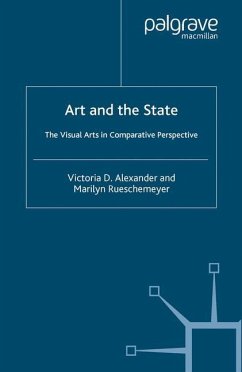This book examines the impact of states and their policies on visual art. States shape the role of art and artists in society, influence the development of audiences, support artistic work, and even affect the very nature of artistic production. The book contrasts developments in the United States with art policies in Britain and in the social democratic states of Norway and Sweden. In addition, it analyzes revealing transitions - the changes brought about in East Germany after unification and the experiences of artists who left the Soviet Union for the west. The result is a significant contribution to the sociology and the political economy of art.
'Art and the State is a wonderful book. I look forward to adopting it for my course on politics and the arts as soon as it is out. I especially like the way in which the authors take a nuanced approach to consider the vexed relationship of the arts and the state. They are right on target when pointing to the subtle control effects that exist in non-totalitarian as well as in extremely authoritarian states. Their comparative perspective is a most valuable addition to an under-studied field.' - Vera Zolberg, Professor of Sociology, New School University
'Timely, informative, and well-structured this book provides a much needed comparison of the relationship between the state and the visual arts in the United States, Britain, Norway, Sweden, East Germany before the fall of Communism, and the Soviet Union. The authors convincingly argue that, regardless of political system, the state is everywhere 'deeply involved in art' and that 'the market alone prevails nowhere'...Art and the State constitutes important reading to all who are interested in the visual arts, in the history, sociology and anthropology of art, in cultural politics, heritage studies, arts management, museology, political science, and many other fields and topics.' - Barbro Klein, Professor of Ethnology, Director, Swedish Collegium for Advanced Study (SCASSS), Uppsala
'Timely, informative, and well-structured this book provides a much needed comparison of the relationship between the state and the visual arts in the United States, Britain, Norway, Sweden, East Germany before the fall of Communism, and the Soviet Union. The authors convincingly argue that, regardless of political system, the state is everywhere 'deeply involved in art' and that 'the market alone prevails nowhere'...Art and the State constitutes important reading to all who are interested in the visual arts, in the history, sociology and anthropology of art, in cultural politics, heritage studies, arts management, museology, political science, and many other fields and topics.' - Barbro Klein, Professor of Ethnology, Director, Swedish Collegium for Advanced Study (SCASSS), Uppsala








